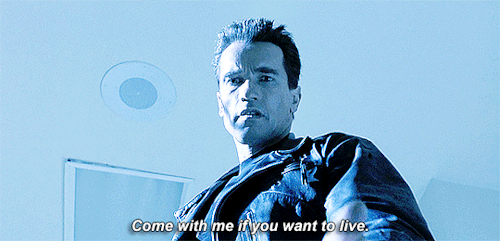As children, we’re taught that “sticks and stones can break our bones, but words can never hurt us.” While a nice sentiment, the more I learn, the more I realize that old adage simply isn't true. Words do have the potential to harm. And the way some movement and rehabilitation professionals have chosen to wield them is doing just that.

Clearly, the human psyche is a powerful thing. It’s our ethical duty to be aware of and avoid creating nocebos — not use them to our advantage to sell books and courses.
It’s time some of my peers quit their marketing tactics and accept their ethical duty, too, before they do more damage. People's well-being is at stake.
For example:
- “If you can’t roll, crawl, and squat like a baby, you’re destined for pain and dysfunction. Take my course to learn how.”
- “If you do bench dips, upright rows, or behind-the-neck presses, you’ll wreck your shoulders. Buy my book to learn about optimal movement.”
- “If you don’t learn how to breathe, you’re gonna die! Come with me if you want to live.”

Okay, so maybe that last one about breathing is literally true, but still.
The Problem with One-Liners
The problem with one-liners like these is they lack context. Without context, we can’t possibly know for certain that a person’s difficulty performing developmental movements will cause pain and dysfunction.
Are people at increased risk for pain/injury based on an inability to perform certain movements? Maybe. But “increased risk” isn’t a guarantee. It depends on a few things.
Do the person’s activities require them to perform the movements they struggle with? Also, what’s causing the difficulty with those movements? Is it just that they’re out of practice, having not attempted to roll/crawl/squat in years?
Moreover, pain is multifactorial, which means it usually isn't caused by just one thing. Things like poor sleep, physical stress, emotional stress, anxiety, depression, and inactivity can all contribute to pain, as well.
Moreover, pain is multifactorial, which means it usually isn't caused by just one thing. Things like poor sleep, physical stress, emotional stress, anxiety, depression, and inactivity can all contribute to pain, as well.
Note, too, that our adult proportions are different from our baby ones and they can make movements like squatting more challenging than they were for us as babies. In addition, some movement patterns we once deemed “dysfunctional” are increasingly becoming considered normal variability (e.g. scapular dyskinesis).
Similarly, without knowing who that person is, we can’t say for sure those dips, upright rows, and behind-the-neck presses will damage their shoulders. While it’s true those exercises can be higher risk for many people, that doesn’t mean they can’t be performed safely by anyone.
To weigh risk versus reward, we have to answer the following questions on a case-by-case basis. What’s the person’s training and injury history? What are their range of motion and strength like? What do they look like when they perform the exercises in question? How confident are they in their ability to perform them?
Why Make Such a Big Deal Out of a Bunch of Words?
A strange thing can happen when we sweepingly promise people they’re going to hurt: some people start to hurt. This process by which words can cause harm actually has a name. It’s called the “nocebo effect.” Admittedly, when I first heard the term, I thought it was made up. But it’s both a real word and a very real phenomenon.
Essentially, a nocebo is the opposite of a placebo. Of course, a placebo is a beneficial effect on health that results from positive expectations. If we’re told something will help us feel better, it often does help us feel better. When that something is physiologically inert, the beneficial effect we’re experiencing is purely psychological. The placebo effect speaks to the incredible interplay between our physiology and psychology.
Conversely, a nocebo is a detrimental effect on health that results from negative expectations. When declarations like the ones above come from people in positions of authority, they can foster negative expectations and beliefs about movement — even when they’re unwarranted. (As in, even when the person should be A-okay from a physiological standpoint.)
For instance, you might not have had any issues before, but once you learn (from someone with 'Dr.' in front of their name) that the inability to crawl is tantamount to back pain, suddenly your back begins to hurt. Likewise, dips may never have bothered you before — until you found out how “damaging” they were to the shoulders. All of a sudden, dips hurt your shoulders. And so on.
I’m not saying people shouldn’t practice rolling, crawling, squatting, and breathing. In fact, I’m fond of all of those exercises. Nor am I saying there aren’t better choices for many people than bench dips, upright rows, and behind-the-neck presses. What I’m arguing with are the generalizations and fearmongering narratives.
What We Can Do Instead
For starters, we can encourage resilient and robust views of the body and the effects of movement on it. Stop talking about the body as if it’s made of glass, and stop imposing arbitrary standards and benchmarks. (“If you can’t do X, then Y will happen.”)
Also, dive into the nuance. Explore the gray area. Teach people. For whom might this exercise be good, and when? For whom might this exercise not be good, and when? What are the risks? Are there other exercises that can provide the same benefit with less risk?
Clearly, the human psyche is a powerful thing. It’s our ethical duty to be aware of and avoid creating nocebos — not use them to our advantage to sell books and courses.
It’s time some of my peers quit their marketing tactics and accept their ethical duty, too, before they do more damage. People's well-being is at stake.
